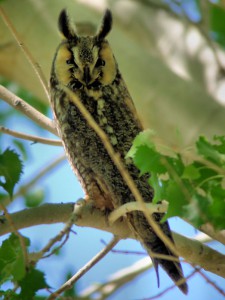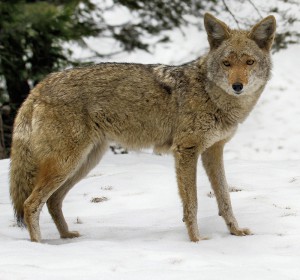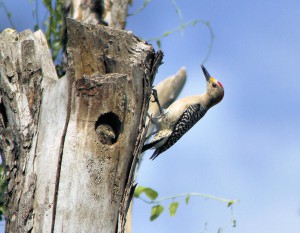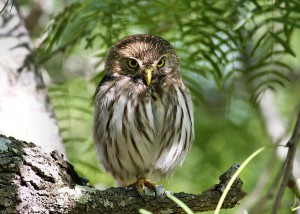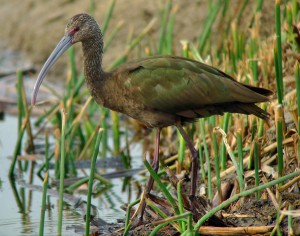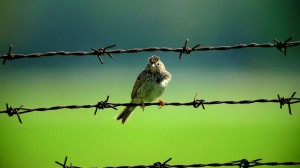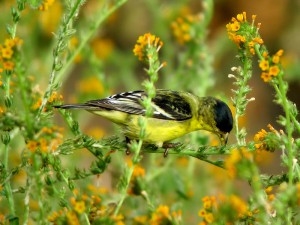I recently led a field trip for the Sea & Sage Audubon chapter to Big Morongo Preserve in San Bernardino County, CA. Big Morongo Preserve sits upon the outflow of subterranean water that supports a marsh and cottonwood forest. Water anywhere in the Mojave desert always brings in migrant birds. Big Morongo is a place where desert inhabitants mingle with marsh and forest birds.
We arrived at Covington Park at 6:00 for some early birding before the official field trip began at 7:00. The park was awash in song as Yellow Warblers shouted from the cottonwoods. A Summer Tanager proclaimed his turf and Eurasian Collared-Doves (yes, they’re here too!) called from the tamarisks along the road. In the dryer areas, Gambel’s Quail sang their odd songs. Meanwhile, a California Thrasher added sweetness and endless variety to the morning chorus.
Lesser and Lawrence’s Goldfinches were flying back and forth between town and the park. Big Morongo and Covington are one of the most reliable places in southern California to see Lawrence’s Goldfinch in spring. They are a beautiful bird with their greenish wingbars, gray and black faces and yellow chests. At 7:00, we tore ourselves away from the birds and went to collect the larger group.
Big Morongo Preserve
I was fortunate to have with me Vic Leipzig, an experienced birder and field trip leader. We split the group of 20 birders in half so folks would have a better chance to see the birds. The often narrow and intimate trails of the preserve make this difficult for large groups. This worked perfectly. I took a group out on the Marsh and the Desert Loop Trails. Vic led his group on the Marsh, Mesquite and Canyon Trails.
The two groups found nearly identical lists of birds, with the exceptions being a calling Virginia Rail found by Vic’s group. My group caught fleeting glimpses of a gorgeous Cassin’s Vireo. Not everyone saw this bird, but all got to hear its halting, burry “elevator” song – “going up? going down?” Other highlights of the walk included great looks at the singing Yellow-breasted Chats, the Brown-crested Flycatchers and threatened Least Bell’s Vireos. We also got up close and personal with several Verdins in the mesquite trees.
Covington Park
Next, we led the participants over to Covington Park for great looks at Bullock’s and Hooded Orioles. Summer and Western Tanagers, Black-headed Grosbeaks, and several pairs of Vermilion Flycatchers also lurked there. A Lark Sparrow was a pleasant surprise for the group. But the absolute glory of this stop was the pair of Long-eared Owls that. For the second year in a row, they raised a brood of chicks in the greater Morongo area. Our visit produced both adults and the youngest two of the five chicks they had this year.
We stopped to watch the bird traffic at the feeders across the street from the park. With a waterfall going, many of the birds from the park would fly across to this yard to bathe and drink before returning to the park. We had a group lunch there under the canopies in Covington Park. Some of the group left after that, but many continued with us to the Black Rock Canyon Campground unit of Joshua Tree National Park, roughly 20 miles further east near the town of Yucca Valley.
Black Rock Canyon
We visited Black Rock for a chance at some of the desert specialties and it paid off handsomely. The Black-throated Sparrows practically stepped on our feet while singing to us. A pair of Scott’s Orioles was a bit more shy. But the male did give us extended views from a not-too-distant yucca plume. Additionally, there were singing Cactus Wrens, displaying Gambel’s Quail and calling Ash-throated Flycatchers. As a crowning touch, some Great Horned Owls were nesting in a large Joshua tree. Everyone got excellent looks at one very pale adult and three rather fuzzy chicks.
The snakes were also fabulous that day. We found this Red Diamondback Rattlesnake crossing the road, and it allowed close approach while scarcely even rattling at us. Near the Great Horned Owl nest, I caught a placid 5-foot Gopher Snake, giving people great views of it.
San Jacinto Peak
By this point, we were down to just 9 people, but they were game for more. So we drove up to Idyllwild for a bit of mountain birding. We made a series of short stops, starting at Lake Fulmor, with a Hairy Woodpecker and several raucous Stellar’s Jays. Joining them were bunches of Mountain Chickadees and a host of Violet-green Swallows. Humber Park netted us Band-tailed Pigeons, Brown Creeper, singing Purple Finches. Finally, after a long search, a White-headed Woodpecker flew right over the cars! At Idyllwild County Park we finally found the Pygmy Nuthatches that had teased us all day. We also added Oak Titmouse and American Robin there. The day ended with a total of 78 species and a large group of happy customers.



